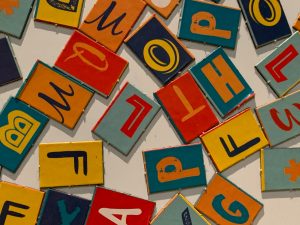As a traveler wandering through a foreign city, you suddenly hear a familiar word ring out: “Café!” Or as a novice language learner, you spot what appears to be a cognate – a word similar between languages, like “doctor.” What is behind these cross-lingual connections in vocabulary that often catch us by surprise? Why do some words sound so alike in tongues with little relation?
For polyglots, these moments of unexpected comprehension serve as small rewards on the journey toward language mastery. Even in unfamiliar linguistic settings, shared roots and borrowings allow flashes of mutual insight. Services like the translation tool https://lingvanex.com can aid exploration by providing quick glossaries for decoding unfamiliar vocabulary. Ultimately, translation technology facilitates greater intercultural connection by exposing speakers of disparate native languages to new vocabularies.
Reasons for Cross-Language Word Connections
Linguists have documented several primary reasons for these cross-language parallels that allow us moments of unexpected comprehension in unfamiliar linguistic settings. One prevalent cause is onomatopoeia – words that phonetically imitate sounds. Simple examples are words like “buzz” or “crash.” The sounds associated with these words ring universally familiar. Thus many languages have evolved equivalents with the same imitative flavor. For instance, the words for cat (miao in Mandarin Chinese, miaou in French, miao in Italian) mimic feline sounds familiar around the world.
Borrowing Words
Borrowing words between languages after cultural contact and exchange is another source of vocabulary similarity. For example, English absorbed “croissant” and “chocolate” from French while lending words like “baseball,” “jeans,” and “internet” to many other languages. Where intercultural influences spread, so does language.
Cognates in Related Languages
Cognates also emerge between related languages descending from common linguistic ancestors. Romance languages like French, Italian and Spanish naturally share many connections through their linkage to Latin. Germanic tongues – English, Dutch, German, etc. also have overlaps through Proto-Germanic heritage. These include “night” (nacht) in German and English and “house” (casa, house) in Spanish and English.
Innate Word-Sound Associations
Finally, some linguists hypothesize certain word sounds carry innate meanings rooted in the mechanics of speech. Words with the open front vowel “ee” tend to express smallness (teeny, weeny, itsy bitsy spider). Labiodental sounds like “f” get associated with blowing or movement (flutter, flow, flee). These patterns subtly manifest across languages. So words denoting specific senses or actions may converge on common sounds.
False Friends and Mystery Cognates
However, experts note false friends – words that seem alike but differ in meaning between languages – remain prevalent. For example, “gift” means “poison” in German. And not all similarities have clear origins. Why do “tok” mean “eye” in Malay, “ojo” mean “eye” in Indonesian while “oko” means “eye” in countless Slavic languages? Ancient connections lost in time may be one explanation.

Urdu’s Diverse Influences
As an Indo-European language, Urdu contains influences from Sanskrit, Arabic, Persian, and Turkish. This blending of multiple linguistic traditions leads to vocabulary familiarity for speakers of Hindi and other regional tongues. For instance, the ubiquitous greeting “Namaste” in Hindi and Urdu stems from the same Sanskrit root, reflecting shared subcontinental history.
For polyglots, Urdu’s diverse influences provide gateways into other language families while still containing familiar touchpoints. Translation tools https://lingvanex.com/translation/english-to-urdu can aid initial comprehension of Urdu vocabulary, while sustained engagement with native speakers and media unlocks mastery.
Translation Tools Provide Connections
Machine translation services like Lingvanex can aid exploration of diverse language families like Urdu by providing quick glossaries for comprehension. And by exposing speakers of disparate native languages to new vocabulary sets, advanced translation technology ultimately facilitates greater intercultural connection and understanding.
Subtle Connections Over Time
Overall, the web of history weaving all human societies together seems to tug and twist language in parallel currents. Whether through mimicry of natural sounds humans relate to worldwide or relics of ancestry, languages reflect the demands of shared existence. If we listen closely, echoes of long-ago migrations, slowly drifting consonants and fleeting imitations of life resound. So while mastering the complexities languages requires rigorous immersion, that moment of delight upon discovering familiar vocab amid foreign streams may speak to centuries of subtle connection.
